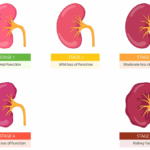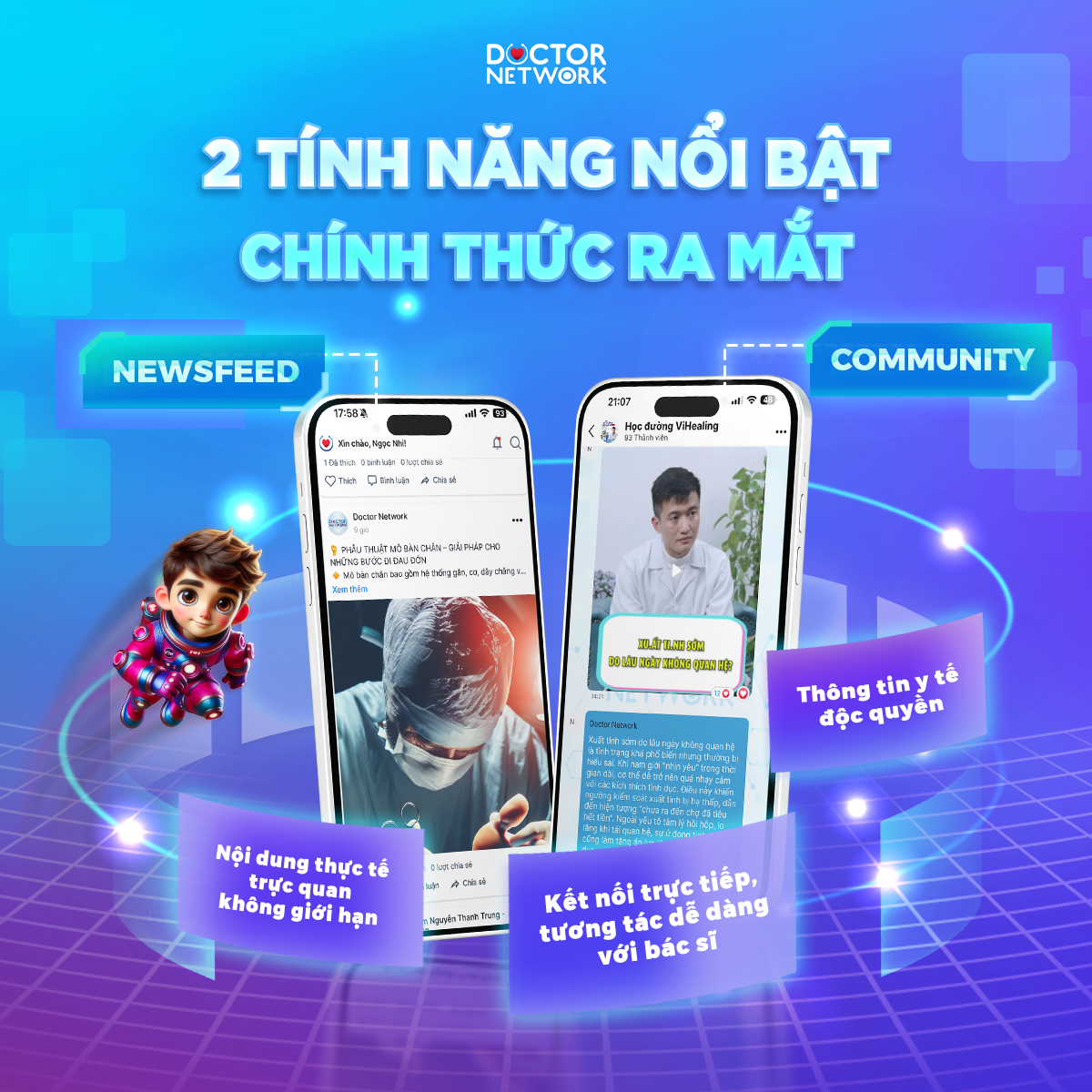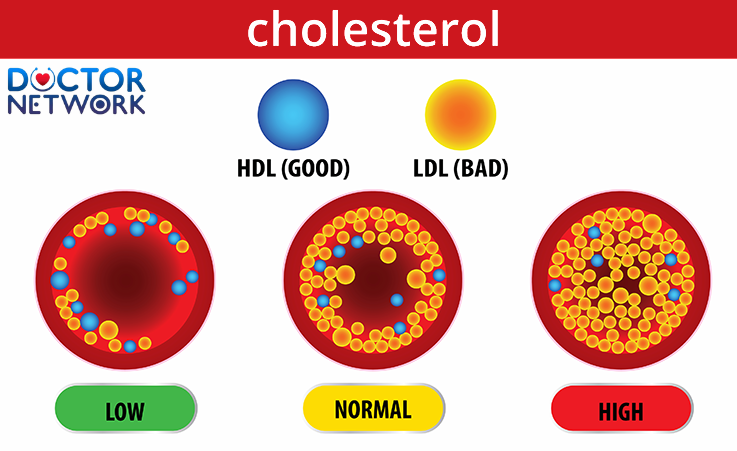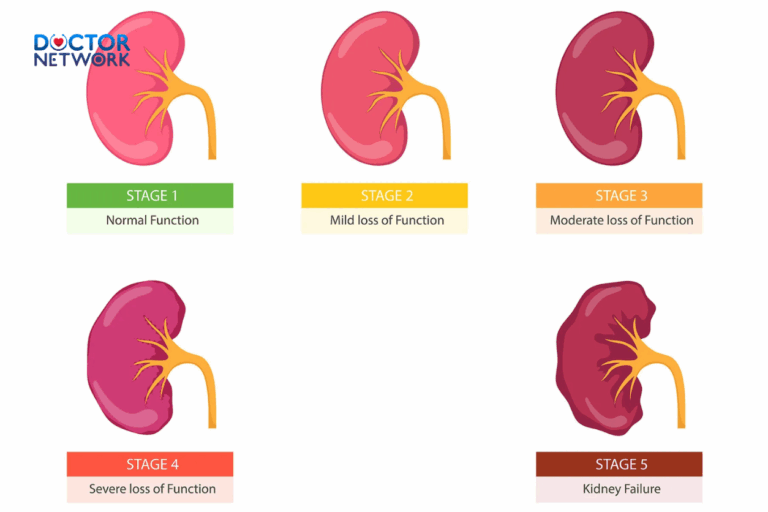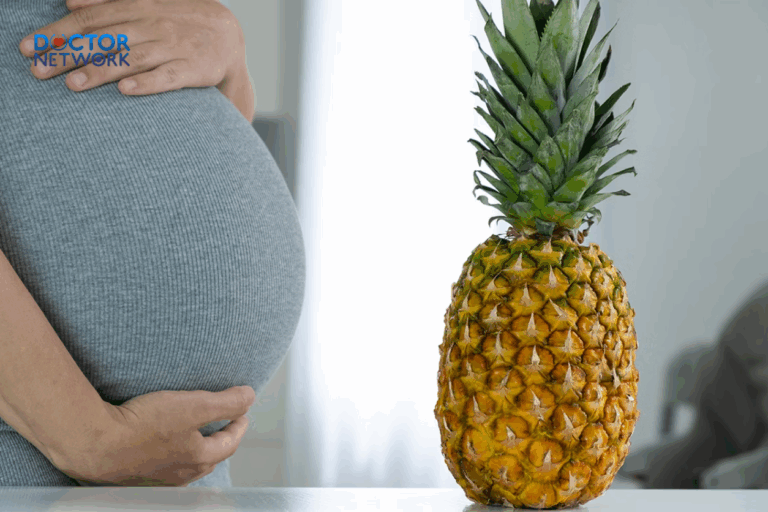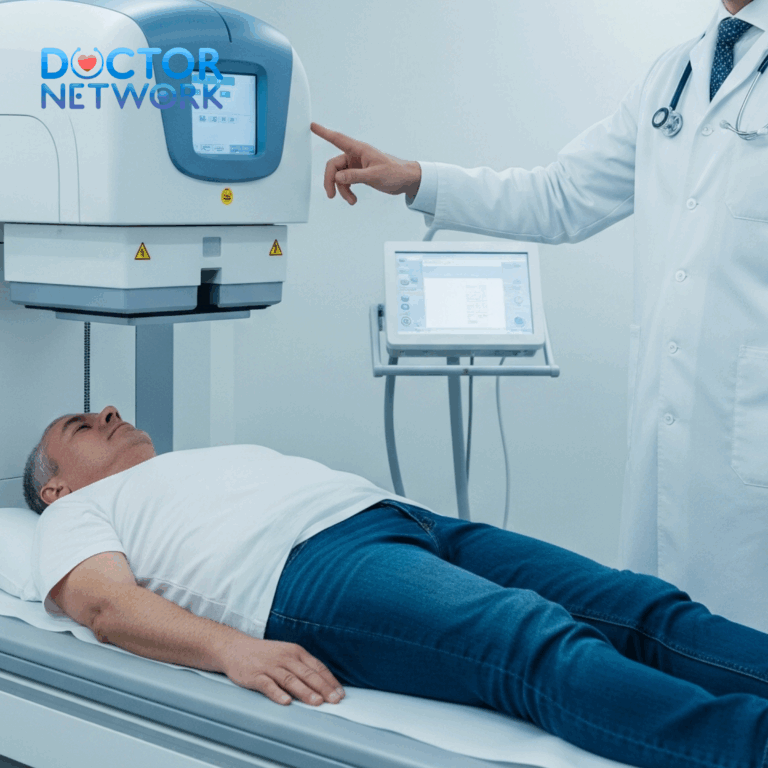“Bad Signs After ACL Surgery” – Anterior cruciate ligament (ACL) reconstruction surgery represents one of the most successful orthopedic procedures, with over 200,000 operations performed annually in the United States alone. However, recognizing dangerous complications early can mean the difference between a complete recovery and permanent knee dysfunction. Post-surgical warning signs range from subtle changes in pain patterns to life-threatening blood clots that demand immediate emergency intervention.
This comprehensive guide examines the critical warning symptoms following ACL reconstruction, including infection markers, graft failure indicators, deep vein thrombosis signs, and rehabilitation complications. We’ll explore the timeline-specific red flags, severity assessment frameworks, and evidence-based intervention strategies that can preserve your surgical investment and protect your long-term joint health. Understanding these warning signs empowers patients to collaborate effectively with their medical teams and achieve optimal recovery outcomes.
Understanding Your ACL Recovery Journey
What is ACL Surgery and Why Monitoring is Crucial
ACL reconstruction involves replacing your damaged anterior cruciate ligament with a graft harvested from your hamstring tendon, patellar tendon, quadriceps tendon, or occasionally from a donor (allograft). This complex procedure restores critical knee stability by reconstructing the ligament that prevents your tibia from sliding forward relative to your femur during pivoting movements.
Orthopedic surgeons perform ACL reconstruction using arthroscopic techniques, creating small incisions to access the joint space. The surgeon removes the torn ligament remnants, prepares bone tunnels in both the femur and tibia, and secures the new graft with specialized screws, buttons, or other fixation devices. This intricate process requires precise tunnel placement and appropriate graft tensioning to restore normal knee biomechanics.
Post-operative monitoring proves essential because even minor complications can cascade into major problems. Infection rates, though low at 0.1-1.7%, can destroy the graft and require extensive revision surgery. Graft failure occurs in 2-10% of cases, often due to technical errors, premature return to activity, or inadequate rehabilitation. Deep vein thrombosis, while rare, affects 0.3-1.5% of patients and can prove fatal if unrecognized.
Recovery is a Process: Normal vs. Concerning Symptoms
ACL recovery unfolds in predictable phases, each with characteristic symptoms and milestones. The inflammatory phase (weeks 0-2) features controlled swelling, moderate pain, and protected weight-bearing. The proliferation phase (weeks 2-6) involves tissue healing, range of motion restoration, and progressive strengthening. The maturation phase (months 3-12) focuses on advanced rehabilitation, sport-specific training, and return to full activity.
Normal recovery symptoms include manageable pain (typically 3-6 on a 10-point scale), gradual swelling reduction, progressive range of motion improvement, and steadily increasing functional capacity. Patients typically achieve full knee extension within 1-2 weeks and 90 degrees of flexion by 2-4 weeks post-surgery.
Concerning symptoms deviate from this expected trajectory. Persistent or worsening pain suggests potential complications. Excessive swelling that fails to respond to elevation and ice may indicate infection or blood clots. Limited range of motion despite consistent therapy can signal arthrofibrosis or mechanical problems. Understanding these distinctions helps patients recognize when normal healing processes have gone awry.
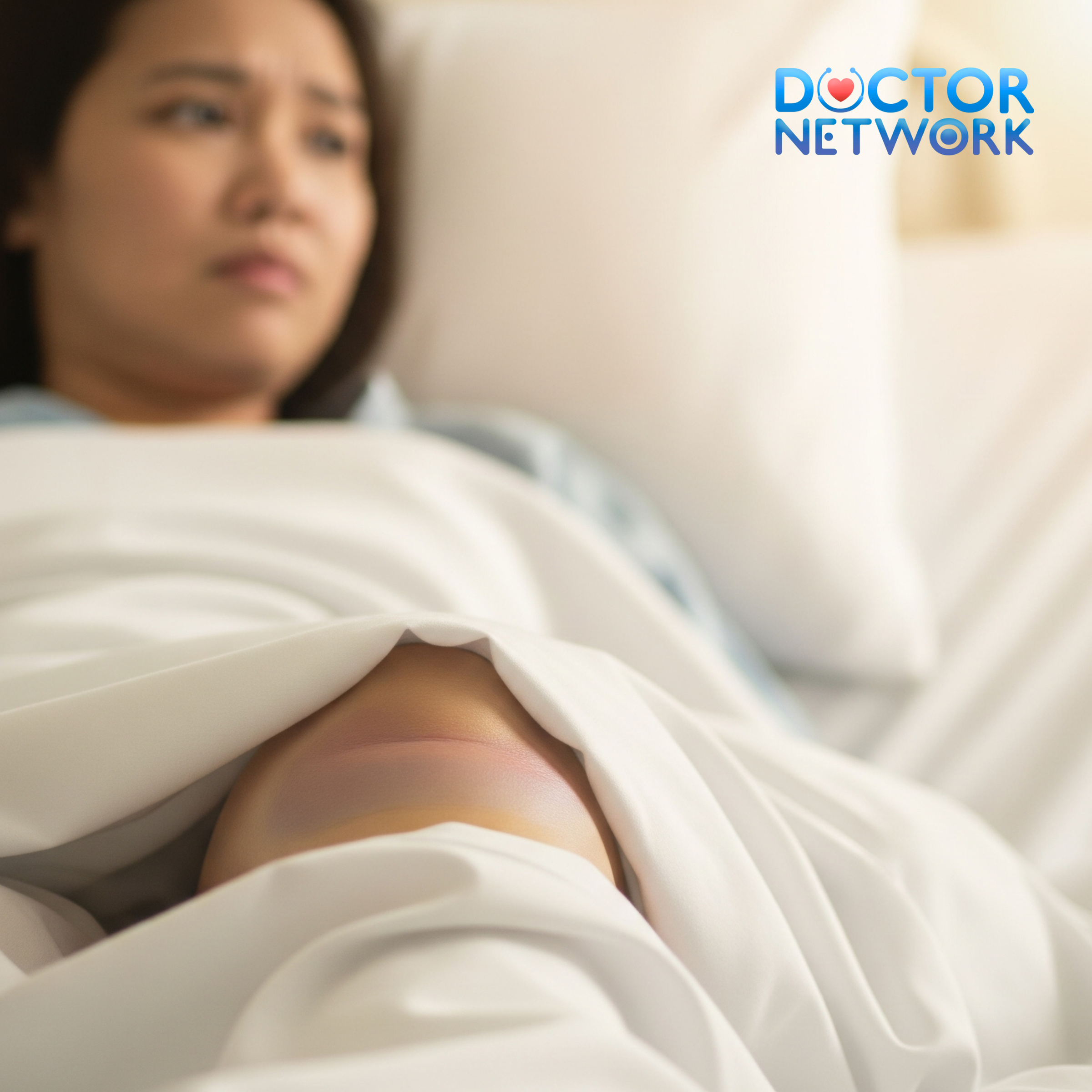
The Timeline: When Symptoms Change Significance
Immediate Post-Operative Period (First Few Weeks)
The immediate post-operative phase demands careful symptom monitoring as complications can develop rapidly. Expected symptoms during this critical period include surgical site tenderness, moderate swelling extending from the knee to the ankle, bruising around the incision sites, and pain levels typically ranging from 4-7 on a 10-point scale.
Normal recovery indicators include progressive pain reduction with medication, swelling that responds to elevation and cryotherapy, clear or slightly blood-tinged drainage from arthroscopy portals, and gradual improvement in weight-bearing tolerance. Patients should achieve protected weight-bearing with crutches and maintain basic knee hygiene through gentle range of motion exercises.
Critical Red Flags During Immediate Post-Op Period:
- Fever exceeding 101°F (38.5°C) or persistent temperature above 100.4°F (38°C)
- Intense erythema and warmth at surgical sites extending beyond normal healing margins
- Purulent drainage with foul odor or green/yellow discoloration
- Intractable pain unresponsive to prescribed medication protocols
- Massive swelling with skin tension, discoloration, or compartment syndrome signs
- Deep vein thrombosis symptoms: unilateral calf swelling, tenderness, warmth, and erythema
Weeks to Months Post-Operative Phase
The intermediate recovery phase spans weeks 2-12, characterized by tissue maturation, progressive rehabilitation, and functional restoration. Expected developments include steady swelling reduction, pain levels decreasing to 2-4 on the pain scale, range of motion approaching normal limits, and increasing strength through physical therapy protocols.
Rehabilitation milestones during this phase include achieving full knee extension by week 2-4, reaching 120-130 degrees of flexion by week 6-8, demonstrating quadriceps control without extension lag, and progressing from protected to full weight-bearing. Physical therapy emphasizes restoring normal gait patterns, improving proprioception, and building foundational strength.
Red Flags During Intermediate Recovery:
- Persistent or increasing swelling after the initial inflammatory phase
- Pain escalation instead of gradual improvement or severe pain during routine activities
- Range of motion plateau despite consistent therapy participation
- Mechanical instability or giving way during protected activities
- Audible mechanical symptoms: painful clicking, grinding, or locking sensations
- Functional regression in previously achieved milestones
Later Recovery Phase (Months 6-12+)
The advanced recovery phase focuses on sport-specific rehabilitation, psychological readiness assessment, and return-to-play decision making. Expected outcomes include near-normal knee function, minimal activity-related symptoms, successful completion of functional tests, and confidence in knee stability during demanding activities.
Athletes typically undergo comprehensive testing including hop tests, agility assessments, isokinetic strength evaluations, and sport-specific movement screens. Psychological readiness scales help assess fear of re-injury and confidence levels. Return to unrestricted activity usually occurs between 9-12 months post-surgery, depending on sport demands and individual progress.
Red Flags During Advanced Recovery:
- Recurrent instability episodes during planned activities or sports participation
- Persistent pain or swelling with normal daily activities
- Significant functional limitations preventing return to desired activity levels
- Mechanical symptoms suggesting graft problems or meniscal complications
- Psychological barriers including persistent fear of re-injury or avoidance behaviors
Specific Warning Signs: What They Mean and When to Worry
Pain: More Than Just Discomfort
Pain assessment after ACL surgery requires understanding normal healing patterns versus pathological processes. Acute post-operative pain typically peaks within 24-48 hours and gradually subsides over 2-3 weeks. Chronic pain persisting beyond 3 months affects 10-15% of patients and may indicate underlying complications.
Pain Severity Assessment Framework:
| Pain Level (0-10) | Description | Typical Action Required |
|---|---|---|
| 0-3 | Mild discomfort, manageable without medication | Continue normal activities |
| 4-6 | Moderate pain, may require occasional medication | Monitor closely, discuss with PT |
| 7-8 | Severe pain, significantly impacts function | Contact surgeon within 24 hours |
| 9-10 | Excruciating pain, unable to function | Seek immediate medical attention |
Concerning pain characteristics include sharp, stabbing sensations suggesting nerve involvement; deep, throbbing pain indicating possible infection; mechanical pain with movement suggesting graft or hardware problems; and nocturnal pain disrupting sleep patterns. Anterior knee pain commonly occurs with patellar tendon grafts due to donor site morbidity, while posterior pain may indicate graft tensioning issues.
Potential Causes of Abnormal Pain:
- Infection: Deep, constant pain with systemic symptoms
- Graft failure: Mechanical pain with instability episodes
- Hardware complications: Localized pain over screw or button sites
- Arthrofibrosis: Stiffness-related pain limiting range of motion
- Complex regional pain syndrome: Disproportionate pain with autonomic changes
Swelling: When “Normal” Becomes “Excessive”
Post-operative swelling represents a natural inflammatory response that typically peaks at 24-72 hours and gradually resolves over 4-8 weeks. Normal swelling responds to elevation, compression, and cryotherapy, while pathological swelling persists despite appropriate management.
Quantitative swelling assessment involves comparing limb circumferences at standardized landmarks. Measurements taken 10cm above and below the patella help track swelling progression. Increases exceeding 2-3cm compared to the unaffected limb warrant medical evaluation.
Swelling Assessment Criteria:
- Mild swelling: 1-2cm circumference difference, resolves with elevation
- Moderate swelling: 2-4cm difference, partially responds to treatment
- Severe swelling: >4cm difference, fails to respond to conservative measures
- Massive swelling: Skin tension, pitting edema, compartment syndrome risk
Excessive swelling may indicate several complications. Joint effusion results from synovial irritation or infection. Hematoma formation occurs with inadequate hemostasis or anticoagulation therapy. Deep vein thrombosis causes unilateral limb swelling with associated pain and warmth. Lymphatic dysfunction rarely causes persistent swelling in post-surgical patients.
Signs of Infection: A Surgical Emergency
Surgical site infections following ACL reconstruction, though uncommon, represent orthopedic emergencies requiring immediate intervention. Superficial infections affect skin and subcutaneous tissues, while deep infections involve the joint space and can destroy the graft.
Clinical Infection Indicators:
| Symptom Category | Early Signs | Advanced Signs |
|---|---|---|
| Local | Mild warmth, slight redness | Intense erythema, fluctuance, abscess |
| Systemic | Low-grade fever, malaise | High fever, chills, sepsis |
| Drainage | Serous, minimal | Purulent, foul-smelling, copious |
| Pain | Increased tenderness | Severe, throbbing, constant |
Risk factors for post-operative infection include diabetes mellitus, immunosuppression, smoking, obesity, prolonged operative time, and revision surgery. Staphylococcus aureus and coagulase-negative staphylococci represent the most common causative organisms.
Laboratory studies supporting infection diagnosis include elevated white blood cell count, increased erythrocyte sedimentation rate, and elevated C-reactive protein levels. Joint aspiration with culture and sensitivity testing provides definitive diagnosis and guides antibiotic selection.
Infection Prevention Strategies:
- Maintain strict wound hygiene protocols
- Monitor for early warning signs daily
- Complete prescribed antibiotic courses
- Avoid exposure to potential contamination sources
- Report concerning symptoms immediately to medical team
Range of Motion Limitations: A Barrier to Recovery
Range of motion restoration represents a critical recovery milestone that directly impacts functional outcomes. Normal knee range of motion includes 0-5 degrees of hyperextension and 135-150 degrees of flexion. ACL reconstruction patients should achieve full extension within 1-2 weeks and 90 degrees of flexion by 4 weeks post-surgery.
Range of Motion Recovery Timeline:
- Week 1-2: Focus on achieving full extension (0 degrees)
- Week 2-4: Progress to 90 degrees of flexion
- Week 4-6: Achieve 120 degrees of flexion
- Week 6-12: Restore full range of motion (135-150 degrees)
Arthrofibrosis, or excessive scar tissue formation, affects 5-10% of ACL patients and significantly limits range of motion. Risk factors include genetic predisposition, prolonged immobilization, infection, and repeated trauma. Early recognition and aggressive intervention can prevent permanent stiffness.
Concerning Range of Motion Signs:
- Extension deficit: Inability to fully straighten the knee
- Flexion limitation: Less than expected bend for timeline
- End-feel changes: Hard, mechanical blocks to movement
- Pain with stretching: Disproportionate discomfort during range of motion exercises
Instability: Is Your Graft Working?
Knee instability following ACL reconstruction may indicate graft failure, inadequate rehabilitation, or combined ligament injuries. True mechanical instability differs from apprehension or psychological fear of re-injury.
Instability Assessment Framework:
| Type | Description | Clinical Significance |
|---|---|---|
| Mechanical | Actual joint displacement | Suggests graft failure |
| Functional | Giving way during activity | May indicate weakness or technique |
| Psychological | Fear-based avoidance | Requires behavioral intervention |
Graft failure occurs in 2-10% of patients and may result from technical errors, biological factors, or premature return to activity. Tunnel placement errors, inadequate graft fixation, and graft impingement represent common technical causes. Patient factors include young age, high activity level, and genetic variations affecting healing.
Clinical tests for stability include the Lachman test, anterior drawer test, and pivot shift maneuver. Instrumented measurements using arthrometers provide objective stability assessments. MRI imaging can evaluate graft integrity and identify associated injuries.
Unusual Noises: Beyond Normal Joint Sounds
Post-operative joint noises commonly occur but require careful evaluation to distinguish benign phenomena from pathological processes. Normal joint sounds include soft clicking from ligament movement over bone surfaces and occasional crepitus from cartilage surface irregularities.
Concerning Auditory Signs:
- Loud, painful clicking: May indicate meniscal pathology
- Grinding or crepitus: Suggests cartilage damage or loose bodies
- Locking sensations: Mechanical blocks requiring immediate evaluation
- Snapping sounds: Possible graft impingement or hardware loosening
Meniscal tears, either pre-existing or iatrogenic, commonly cause mechanical symptoms. Graft impingement against the intercondylar notch produces clicking with knee flexion. Loose bodies from cartilage fragments or bone debris can cause intermittent locking episodes.
Deep Vein Thrombosis: A Life-Threatening Complication
Deep vein thrombosis represents a rare but potentially fatal complication of ACL surgery. Prolonged immobilization, surgical trauma, and genetic thrombophilia predispose patients to clot formation. Early recognition and treatment prevent pulmonary embolism, which can be life-threatening.
DVT Clinical Presentation:
- Unilateral leg swelling: Affected limb noticeably larger
- Calf pain and tenderness: Deep, aching discomfort
- Skin warmth and erythema: Localized inflammatory signs
- Positive Homan’s sign: Pain with passive dorsiflexion
- Systemic symptoms: Shortness of breath if pulmonary embolism occurs
Risk factors for DVT include advanced age, obesity, smoking, oral contraceptive use, previous thrombotic events, and prolonged immobilization. Genetic factors including Factor V Leiden mutation and prothrombin gene variants increase thrombosis risk.
Emergency Warning Signs Requiring Immediate Medical Attention:
- Sudden onset shortness of breath
- Chest pain with breathing
- Rapid heart rate or palpitations
- Coughing up blood
- Severe leg pain with swelling
Prevention and Monitoring Strategies
The Foundation: Rehabilitation Compliance
Successful ACL recovery depends heavily on patient adherence to structured rehabilitation protocols. Physical therapy progression follows evidence-based guidelines that optimize healing while preventing complications. Non-compliance significantly increases the risk of graft failure, persistent stiffness, and functional limitations.
Rehabilitation Phase Objectives:
- Phase I (0-6 weeks): Control inflammation, restore range of motion
- Phase II (6-12 weeks): Develop strength, improve proprioception
- Phase III (3-6 months): Advanced strengthening, agility training
- Phase IV (6-12 months): Sport-specific preparation, return to play
Psychological factors significantly impact rehabilitation success. Fear of re-injury affects 50-60% of ACL patients and can impede progress. Cognitive-behavioral interventions, graduated exposure therapy, and peer support groups help address psychological barriers to recovery.
5 frequently asked questions about “Bad signs after acl surgery”
1. What are the most common bad signs after ACL surgery that I should watch out for?
Common bad signs after ACL surgery include excessive swelling or bruising that doesn’t improve, unbearable or worsening pain, redness or warmth around the incision site, limited or worsening range of motion, and feelings of instability or the knee “giving way.” Other signs include persistent redness, pus or foul-smelling drainage from the wound, fever, and unusual fatigue, which may indicate infection. Sudden swelling in the calf or thigh, pain or tenderness in one leg, and shortness of breath could signal a blood clot (deep vein thrombosis) and require immediate medical attention.
2. How can I distinguish between normal post-surgery symptoms and signs of complications?
Normal recovery after ACL surgery usually involves moderate swelling and some discomfort, especially in the first two weeks. Mild redness around the incision is also typical. However, if swelling is persistent or worsening, pain is severe and unmanageable even with medication, redness is intense or spreading, or there is discharge from the wound, these are concerning signs. Additionally, if you experience stiffness that prevents bending or straightening your knee despite physical therapy, or if you feel instability in the knee, these may indicate complications such as infection, graft failure, or scar tissue formation.
3. What does graft failure look like after ACL surgery?
Symptoms of ACL graft failure include recurrent instability or the sensation that the knee is giving way, persistent or worsening pain especially during bending or twisting, swelling around the knee joint, decreased range of motion, and decreased overall knee functionality. Patients may notice difficulty performing daily activities like walking or standing for long periods. Imaging studies like MRI can help diagnose graft failure by showing graft laxity or abnormal signals.
4. When should I contact my doctor after ACL surgery?
You should contact your doctor immediately if you experience any of the following: severe or worsening pain, excessive or increasing swelling, redness or warmth around the incision site, pus or foul-smelling discharge, fever above 101°F (38°C), sudden calf or thigh swelling and pain (possible blood clot), knee instability or frequent giving way, or if your knee remains stiff and does not improve with therapy. Early consultation helps prevent complications from worsening and allows timely treatment.
5. How can I prevent bad signs or complications after ACL surgery?
To reduce the risk of complications, follow your rehabilitation plan carefully, including prescribed physical therapy exercises. Use knee braces or supports as recommended, keep the surgical wound clean and dry, and attend all follow-up appointments. Maintain a healthy diet, stay hydrated, avoid smoking and excessive alcohol, and gradually increase activity levels as advised by your healthcare team. Avoid high-impact activities, sudden twisting motions, or heavy lifting during early recovery stages. Monitoring symptoms closely and reporting any unusual changes promptly can help ensure a smooth recovery.
References
1. Infection (Surgical Site Infection – SSI)
Bad Signs:
Fever (especially >101°F or 38.3°C)
Increasing redness, warmth, or swelling around the incision(s)
Pus or cloudy fluid draining from the incision(s)
Foul odor from the incision
Increased pain, especially throbbing pain, that is not relieved by medication or rest.
Evidence & Research:
Source: Dodson, C. C., Secrist, E. S., Bhat, S. B., Woods, D. P., & Deluca, P. F. (2016). Anterior Cruciate Ligament Reconstruction: A Systematic Review of Complications. The American Journal of Sports Medicine, 44(1), 258–264.
Key Finding: This systematic review discusses various complications, including infection. They note that “the incidence of deep infection after ACL reconstruction is reported to be between 0.14% and 1.7%.” Symptoms include erythema, warmth, purulent drainage, and fever.
Source: Brophy, R. H., Wright, R. W., & Matava, M. J. (2009). Cost analysis of converting from reusable to disposable supplies for anterior cruciate ligament reconstruction. The Journal of Bone and Joint Surgery. American volume, 91(5), 1149–1156. (While a cost analysis, it often discusses risks like infection in its rationale).
Relevant Point: Many studies on ACLR will discuss infection as a primary concern and outline typical diagnostic criteria which include the signs listed above.
2. Deep Vein Thrombosis (DVT) / Pulmonary Embolism (PE)
Bad Signs (DVT):
Pain, swelling, tenderness, or warmth in the calf or thigh (often unilateral)
Redness or discoloration of the skin on the leg
Bad Signs (PE – a DVT that has traveled to the lungs, a medical emergency):
Sudden shortness of breath
Chest pain (often sharp and worse with deep breaths)
Rapid heart rate
Coughing, possibly with blood
Lightheadedness or fainting
Evidence & Research:
Source: Jameson, S. S., Dowen, D., Ghol Насеr, M. K., & Rangan, A. (2009). The impact of national guidelines on the prophylaxis of venous thromboembolism in arthroscopic anterior cruciate ligament reconstruction. The Journal of bone and joint surgery. British volume, 91(11), 1465–1469.
Key Finding: While the overall incidence is relatively low for isolated ACLR compared to larger joint replacements, DVT/PE is a serious potential complication. Symptoms like calf pain, swelling, and tenderness are highlighted.
Source: American Academy of Orthopaedic Surgeons (AAOS). Preventing Blood Clots After Orthopaedic Surgery. (Often available on their patient education website, OrthoInfo).
Relevant Point: AAOS guidelines and patient information emphasize awareness of DVT/PE symptoms post-surgery. They list classic symptoms like swelling, pain, warmth, and redness in the leg for DVT, and chest pain/shortness of breath for PE.
3. Graft Failure or Re-rupture
Bad Signs:
A feeling of instability or the knee “giving way” (similar to the pre-injury sensation)
A distinct “pop” or “snap” during an activity, followed by pain and swelling
Recurrent swelling and pain with activity, beyond the normal recovery timeframe
Inability to trust the knee during pivoting or cutting maneuvers
Evidence & Research:
Source: Wiggins, A. J., Grandhi, R. K., Schneider, D. K., Stanfield, D., Webster, K. E., & Myer, G. D. (2016). Risk of Secondary Injury in Younger Athletes After Anterior Cruciate Ligament Reconstruction: A Systematic Review and Meta-analysis. The American Journal of Sports Medicine, 44(7), 1861–1876.
Key Finding: This meta-analysis discusses the high rates of second ACL injuries (either to the reconstructed knee or the contralateral knee). While not specifically “bad signs,” it highlights the risk, and symptoms of re-injury would mirror primary injury symptoms: instability, popping, swelling, pain.
Source: Kaeding, C. C., Létt, J. A., & Best, T. M. (2011). The reharvested central third of the patellar tendon has a similar histology and matrix composition as the primary graft. The American Journal of Sports Medicine, 39(1), 129–137. (While about reharvesting, the context is graft failure).
Relevant Point: Studies on revision ACLR inherently discuss the failure of the primary graft. The primary indicator for revision is symptomatic instability, pain, and an inability to return to desired activity levels, often confirmed by clinical tests (Lachman, Pivot Shift) and MRI.
4. Arthrofibrosis (Stiffness / Loss of Motion)
Bad Signs:
Persistent difficulty regaining full knee extension (straightening)
Significant difficulty regaining knee flexion (bending)
A feeling of “tightness” or “blockage” in the knee that doesn’t improve with rehabilitation
Anterior knee pain, especially with attempts to extend the knee
Evidence & Research:
Source: Millett, P. J., Williams, R. J., & Wickiewicz, T. L. (2001). Open debridement and soft tissue release as a treatment for arthrofibrosis after anterior cruciate ligament reconstruction. The American Journal of Sports Medicine, 29(5), 624–632.
Key Finding: Arthrofibrosis is a known complication. The study discusses loss of motion (both flexion and extension) as the hallmark. Early recognition and aggressive physical therapy are key, but sometimes surgical intervention (lysis of adhesions) is needed.
Source: DeHaven, K. E., & Cosgarea, A. J. (2004). Diagnosing and managing arthrofibrosis of the knee following anterior cruciate ligament reconstruction. The American Journal of Sports Medicine, 32(2), 552–559.
Key Finding: This paper provides a comprehensive overview, defining arthrofibrosis as a “pathologic response resulting in limited range of motion.” It details diagnostic criteria including specific degrees of motion loss (e.g., loss of >10° extension or >25° flexion compared to the other side).
5. Persistent or Worsening Pain (Beyond normal post-op pain)
Bad Signs:
Pain that is out of proportion to the expected recovery phase
Pain that progressively worsens instead of improves
Pain that is not controlled by prescribed medication
Localized pain that might indicate hardware irritation, nerve impingement, or other issues.
Evidence & Research:
Source: Gobbi, A., & Mahajan, S. (2003). Complications of anterior cruciate ligament reconstruction. Operative Techniques in Sports Medicine, 11(2), 132–141.
Key Finding: This review discusses various causes of persistent pain post-ACLR, including cyclops lesion (a type of arthrofibrosis), hardware issues, undiagnosed associated injuries (e.g., meniscal tears, chondral damage), or complex regional pain syndrome (CRPS).
Source: Shelbourne, K. D., & Gray, T. (2000). Anterior cruciate ligament reconstruction with autogenous patellar tendon graft followed by accelerated rehabilitation. A two- to nine-year followup. The American Journal of Sports Medicine, 28(6), 816–824.
Relevant Point: While focusing on accelerated rehab, such studies often track patient-reported outcomes, including pain. Deviations from expected pain resolution timelines can indicate a problem. Persistent anterior knee pain, for example, can be associated with patellar tendon grafts or issues like patellofemoral chondromalacia.
6. Nerve Damage or Irritation
Bad Signs:
Persistent numbness or tingling in specific areas of the lower leg or foot (especially the distribution of the saphenous nerve)
Weakness in specific muscle groups (e.g., difficulty with ankle dorsiflexion, suggesting peroneal nerve issue – though rarer for isolated ACLR unless there was associated trauma or tourniquet issues).
Burning pain along a nerve distribution.
Evidence & Research:
Source: Figueroa, D., Calvo, R., Vaisman, A., Arellano, S., Figueroa, F., & Putz, R. (2008). Injury to the infrapatellar branch of the saphenous nerve in ACL reconstruction with the hamstrings technique: an anatomical and clinical study. The Knee, 15(5), 360–363.
Key Finding: Injury to the infrapatellar branch of the saphenous nerve is common, especially with hamstring tendon grafts, leading to a patch of numbness or altered sensation on the anteromedial aspect of the proximal tibia. While often resolving or becoming less bothersome, persistent painful neuroma can be a “bad sign.”
Source: Sanders, B., Rolf, R., McClelland, W., & Xerogeanes, J. (2007). Prevalence of saphenous nerve injury after autogenous hamstring harvest: an anatomic and clinical study of sartorial branch injury. Arthroscopy: The Journal of Arthroscopic & Related Surgery, 23(9), 956–963.
Key Finding: Similar to the above, this study details the anatomy and risk of saphenous nerve injury during hamstring graft harvest, describing the resulting sensory deficits.
Kiểm Duyệt Nội Dung
More than 10 years of marketing communications experience in the medical and health field.
Successfully deployed marketing communication activities, content development and social networking channels for hospital partners, clinics, doctors and medical professionals across the country.
More than 6 years of experience in organizing and producing leading prestigious medical programs in Vietnam, in collaboration with Ho Chi Minh City Television (HTV). Typical programs include Nhật Ký Blouse Trắng, Bác Sĩ Nói Gì, Alo Bác Sĩ Nghe, Nhật Ký Hạnh Phúc, Vui Khỏe Cùng Con, Bác Sỹ Mẹ, v.v.
Comprehensive cooperation with hundreds of hospitals and clinics, thousands of doctors and medical experts to join hands in building a medical content and service platform on the Doctor Network application.











